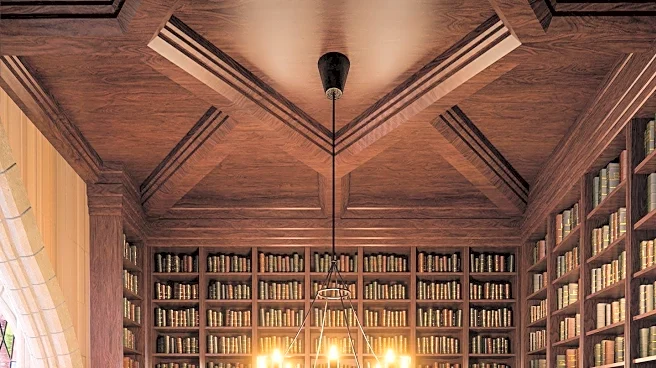What's Happening?
Design experts have revealed various architectural clues that may indicate the presence of hidden rooms in homes. According to Isfira Jensen, CEO of Jensen & Co. Interiors, homeowners should pay attention
to structural irregularities such as unusually thick walls, misaligned doors, and extra space between adjoining rooms, which could suggest hidden cavities. These inconsistencies often stand out when compared to surrounding walls or doorways. Measuring dimensions and comparing them to adjacent rooms can help identify missing space, potentially indicating concealed areas. Other signs include uneven trim, strange doors, mismatched floor levels, and flooring transitions like small steps or patches of newer flooring, which may hint at hidden spaces underneath.
Why It's Important?
The discovery of hidden rooms can have significant implications for homeowners, particularly in terms of property value and security. Identifying these spaces can lead to increased usable square footage, potentially enhancing the home's market value. Additionally, uncovering hidden areas can address safety concerns, as concealed spaces might be used for unauthorized purposes or harbor structural issues. For real estate investors and contractors, understanding these architectural clues can aid in property assessments and renovations, ensuring that all available space is utilized effectively and safely.
What's Next?
Homeowners and real estate professionals may consider conducting thorough inspections to identify potential hidden spaces. This could involve hiring experts to assess structural anomalies and using advanced tools like thermal imaging to detect concealed areas. As awareness of hidden rooms grows, there may be increased demand for professional services specializing in uncovering and renovating these spaces. Additionally, real estate listings might begin to highlight the presence of hidden rooms as a unique selling point, attracting buyers interested in properties with intriguing architectural features.
Beyond the Headlines
The fascination with hidden rooms taps into broader cultural themes of mystery and discovery, often depicted in literature and media. This interest reflects a desire for exploration and the allure of uncovering secrets within familiar environments. Ethically, the presence of hidden rooms raises questions about transparency in real estate transactions and the responsibility of sellers to disclose all aspects of a property. As the trend of discovering hidden spaces continues, it may influence architectural design, encouraging more creative and flexible use of space in new constructions.











